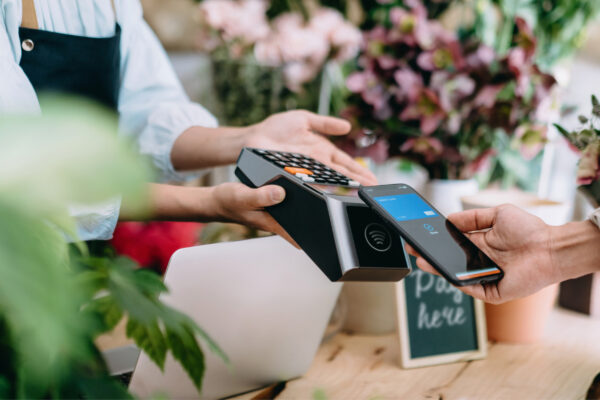
The holiday season has long been an essential time for the retail community, as the term “Black Friday” indicates.
What is Black Friday Anyway?
“Black Friday” has had several definitions. It was popularly reinterpreted in the early 1980s as the critical day on which retailers finally began to show a profit for the year (in accounting terms, moving from being “in the red” to “in the black”) after operating at an overall loss from January through mid-November.
This term, Black Friday, defined the country’s holiday season shopping patterns for almost five decades. Quickly developing a reputation as the hottest shopping day of the year. Consumers flocked to the stores on their day off after Thanksgiving to take full advantage of exciting deals and sales. While at the same time avoiding the crush that was sure to occur Saturday and Sunday of the long holiday weekend. Eventually Black Friday evolved into an almost cult-like phenomenon as more and more shoppers set their alarm clocks in order to be first in line as soon as their family Thanksgiving dinner came to an end.
We recongniize that some retailers invite shoppers to start on Thursday evenings as soon as the dishes have been cleared from their tables. Nonetheless, Friday had remained as the main focus for shoppers who enjoy the brick and mortar experience.
Then along came “Cyber Monday”. This concept entered the retail conversation as a new term to define the spike in shopping taking place on Monday after Thanksgiving. Coined by Shop.org in 2005, it refers to the online equivalent of “Black Friday”. Employees return to the office ready to continue their shopping while shifting to an Internet platform. To keep up the momentum and to keep the shopping levels high after a weekend of crowded malls and waiting at busy retail shops, many online retailers began offering deep discounts and other perks to lure online shoppers. Their efforts have paid off.
While Black Friday continues to flex its powerful economic muscle, the increase in on-line shopping on Monday cannot be ignored. The data tells the story. As early as 2009, online shoppers spent nearly a billion dollars on “Cyber Monday”. Many in the industry have already begun to publish current statistics. Stating that e-commerce’s share of total retail sales during the 2017 holiday season is likely to hit 11.5% of all holiday shopping . This reflects an upward trend that substantiates a prediction that going forward the percentage will consistently rise.
What is the Impact of the Growing Popularity of Online Shopping?
The first, and perhaps most obvious, is the whole experience of in-store shopping. Which can be stressful. It brings significant time commitments, often due to huge parking challenges and waiting in line at stores. Millions of shoppers really look forward to the buzz and enthusiasm created during in-store shopping. The excitement, which reaches its apex during the holiday season is fueled by seasonal decorations, the presence of Santa, give-aways and other fun perks. Despite this, the pressure of carving out the time needed for shopping in person along with the difficulty of finding the right item, efficiently checking out and the frequent lack of a solid customer service commitment, are having a growing negative impact.
Poor weather is another reason for forgoing the in-store experience in lieu of shopping from the comfort of office or home. Cold weather, snow or even rain, can influence many consumers to simply stay home.
Thirdly, as the time that people are spending on their mobile devices rises steeply, shopping from a smart phone is now an attractive extension of an existing reality. As a result, some of the retail consultants are predicting as much as 25% of United States e-commerce over the holiday season will occur from mobile activities.
But Are Black Friday and Cyber Monday Becoming Endangered Species?
But now even these twin trends – Black Friday and Cyber Monday – which were considered embedded into the US consumer buying patterns are coming under scrutiny. With experts in the retail sector asking if either can actually survive.
The impetus behind the projected “demise” of the pillars which have heralded the start of the retail shopping season has its roots in statistics that show that shoppers no longer need to wait for the special holiday deals and discounts. In fact, in a recent article published in the Washington Post authored byAbha Bhattarai, the headline says it all: The Era of Holiday Deals is Dead, and so is Black Friday.”
Bhattarai goes on to substantiate the prediction. She points out that fewer Americans plan to shop on Black Friday this year than in previous years. Due to consumers growing accustomed to deep discounts year-round. Black Friday turnout has steadily declined in stores and online. Last year, for example, 154 million Americans shopped during Thanksgiving weekend. Marking a 32 percent decline from 2011, according to the National Retail Federation.
About 35% of consumers admit they will shop during Thanksgiving week on Black Friday. That number is down significantly; from 51% last year and 59% the year before, according to consumer markets research conducted by PwC. More and more retailers have used the “everything’s on sale every day” concept to drive traffic consistently all year. Consumers realize that the deals promoted on Black Friday aren’t different from the attractive offers that bombard them every month. Which may now reduce the Friday “feeding frenzy” that defined the long Thanksgiving holiday weekend for so many years.
Helpful Hints for In-Store Successes
Acknowledging that online shopping will continue to plague brick and mortar shops, there are some things that retailers can do to continue to be relevant.
The first is for them to begin to develop an integrated, multi-faceted approach. Offering customers exciting shopping experiences both on-line and in-store. Every retailer must have an optimized mobile website where shoppers can conduct important research on the products they want most. After all the research is done, retailers can be encouraged to make more in-store visits; where they can actually see and touch the products after making their purchasing decision.
To leverage this two-phase strategy, the stores must have the fully stocked shelves. That enables them to offer a unique experience that online shopping cannot match. For this work well, sales people need to be really helpful, knowledgeable and flexible. If standing in line to pay is a major turn off, store owners can eliminate waiting lines. Replace the traditional processes with roaming checkout options. Supported by staff armed with tablet check out options who move around the store. Thus interacting with the customers much more efficiently.
Next, along with other options, retailers also offer ‘surprise’ sales or big discounts daily that only shoppers in the store can leverage.
Finally, retailers can host special in-store events that attract shoppers during the holiday season. The possibilities of special happenings can be almost limitless. Based on the retailer and the shoppers’ interest, and when used properly they can generate enthusiasm and drive more traffic.
Retailers cannot hide from the extraordinary changes that technology has brought to the sector. Instead they can remain profitable and sustainable if they conduct research regarding what their customers really value, leverage the data to make smart decisions, offer multiple shopping channels and create a dynamic experience that is completely customer-centric. Addressing what clients value most should always be integral for any strategic plan!
Here are some key shopping tips just published by the NY Times to enhance your shopping experience.


